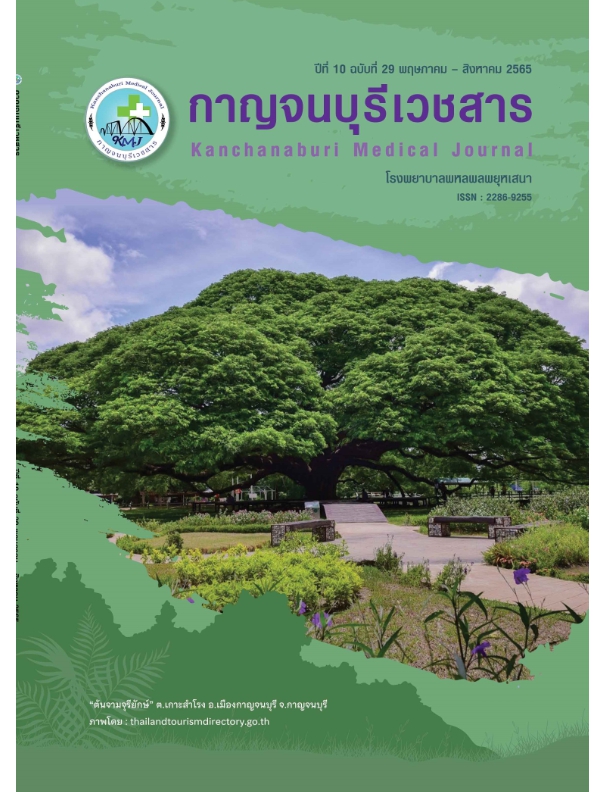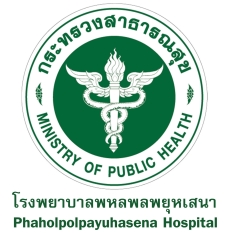Risk factors relating to recurrent febrile seizures in Pediatric patients At Phaholpolpayuhasena hospital
Abstract
Febrile seizure is the most common seizure disorder in children, approximately one-third of them develop a recurrent of febrile seizure. And some studies have shown that there may be an increased risk of epilepsy Objectives: To identify risk factors relating to recurrent febrile seizures and determine incidence of epilepsy after recurrent febrile seizures in pediatric patients at Phaholpolpayuhasena hospital. Methods: A retrospective study was performed by recruiting the children who presented with first febrile seizure at Phaholpolpayuhasena hospital between January 1st 2016 and December 31st 2018. The data were recorded and analysed with chi-square, Fisher’s exact test and multiple logistic regression analysis.
Results: There were 355 children who presented with first episode febrile seizures, 106 of them had recurrence. The study indicated that a family history of febrile seizures were associated with an increased risk of recurrent febrile seizures and multiple logistic regression analysis revealed that a positive family history was significantly higher in children with recurrent febrile seizures, compared with those without recurrent febrile seizures with odds ratio of 2.35 (OR=2.35, 95% CI=1.418-3.905, P=0.001). Additionally, the study had showed that the incidence of epilepsy in children with recurrent febrile seizures were 8.5% that higher than those without recurrence with statistical significance.
Conclusion: A family history of febrile seizure was risk factors of recurrent febrile seizures in children and a history of recurrent febrile seizures appeared to be associated with a risk of epilepsy.
References
Berg AT, PhD, Shlomo Shinnar, M.D., PhD, W. Allen hauser, M.D., Marta Alemany, Eugene D. Shapiro, M.D., Morton E. Salomon, M.D. et al. A Prospective study of recurrent febrile seizures. The New England journal of Medicine 1992 Oct;327(16):1122-1127
C. Waruiru, R. Appleton. Febrile seizures: an update. Arch Dis Child 2004;89:751-756
Sajun Chung, MD. Febrile seizure. Korean J Pediatr 2014;57(9):384-390
Julie Werenberg Dreier, PhD, Jiong Li, PhD, Yuelian Sun, PhD, and Jakob Christensen, MD, DrMedSci. Evaluation of long-term risk of epilepsy, psychiatric disorders, and mortality among children with recurrent febrile seizures. JAMA Pediatric 2019 Dec;173(12):1164-1170
Anne T. Berg, PhD, ShlomoShinnar, MD, PhD, Amy S. Darefsky, MPH, Theodore R. Holford, PhD, Eugene D. Shapiro, MD, Morton E. Salmon, MD, et al. Predictors of recurrent febrile seizures. Arch PediatrAdolesc Med 1997;151:371-378
Navneet Kumar, Tanu Midha, and Yashwant Kumar Rao. Risk factors of recurrence of febrile seizures in children in a tertiary care hospital in Kanpur: One year follow up study. Ann Indian Acad Neurol. 2019 Jan-Mar;22(1):31-36
Nadirah Rasyid Ridha, P.Nara, Hadia Angriani, Dasril Daud. Identification of risk factors for recurrent febrile convulsion. Paediatr Indones 2009 Mar;49(2):87-90
Abdul Wahid Hussain, Abrar Ul Haq, Sohail Shahzad, Bilal Murtaza, Umar Nawaz, Munir Akmal Lodhi. Iron deficiency anemia – A risk factor for febrile seizures in children. Pak Armed Forces Med J 2018;68(5):1300-05
Worawit Kantamalee MD, Kamornwan Katanyuwong MD, Orawan Louthrenoo MD. Clinical characteristics of febrile seizures and risk factors of its recurrence in Chiang Mai University hospital. Neurology Asia 2017;22(3):203-208
Shabbir Hussain, Saba Haider Tarar, Moin Ud Din Sabir. Febrile seizures: demographic, clinical and etiological profile of children admitted with febrile seizures in a tertiary care hospital. J Pak Med Assoc 2015;65(9):1008-10
Esmaili Gourabi H, Bidabadi E, Cheraghalipour F, Aarabi Y, Salamat F. Febrile seizure: Demographic features and causative factors. Iran J Child Neurology 2012;6(4):33-7
Downloads
Published
How to Cite
Issue
Section
License
Copyright (c) 2022 Phaholpolpayuhasena Hospital

This work is licensed under a Creative Commons Attribution-NonCommercial-NoDerivatives 4.0 International License.
บทความที่ได้รับการตีพิมพ์เป็นลิขสิทธิ์ของโรงพยาบาลพหลพลพยุหเสนา
ข้อความที่ปรากฏในบทความแต่ละเรื่องในวารสารวิชาการเล่มนี้เป็นความคิดเห็นส่วนตัวของผู้เขียนแต่ละท่านไม่เกี่ยวข้องกับโรงพยาบาลพหลพลพยุหเสนาและบุคลากรท่านอื่น ๆ ในโรงพยาบาลฯ แต่อย่างใด ความรับผิดชอบองค์ประกอบทั้งหมดของบทความแต่ละเรื่องเป็นของผู้เขียนแต่ละท่าน หากมีความผิดพลาดใด ๆ ผู้เขียนแต่ละท่านจะรับผิดชอบบทความของตนเอง



 Phaholpolpayuhasena Hospital
Phaholpolpayuhasena Hospital